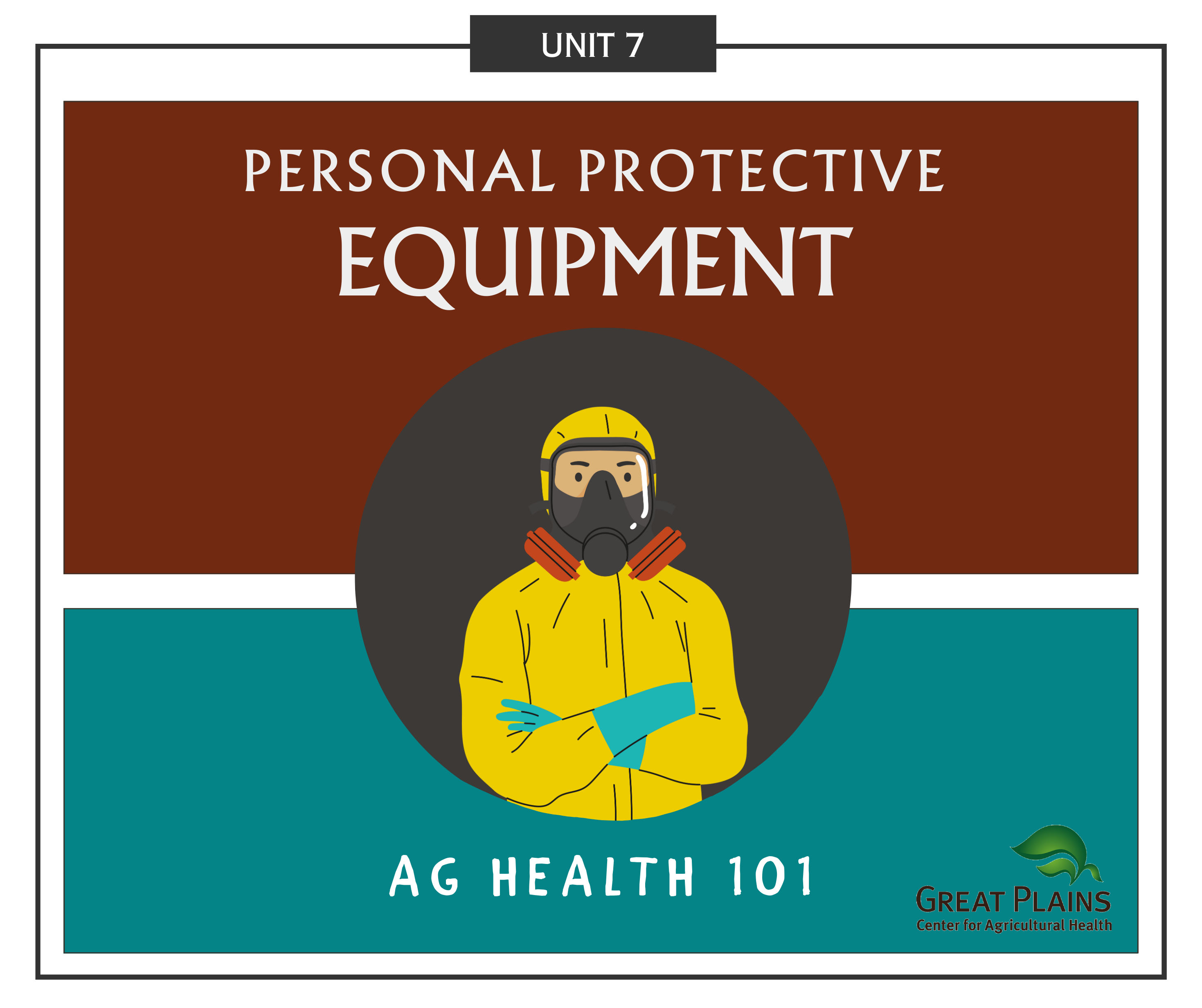
Unit 7.
Personal Protective Equipment
In this unit, the goal is to help listeners become familiar with different types of personal protective equipment (PPE) being used in agricultural settings, what needs to be considered for selection and recommendation of PPE, as well as guidance on precautions, care, and maintenance of various PPE categories.
Chapter 1: Introduction to PPE and Control Options
This introductory chapter will define what is meant by “PPE”. We will then discuss how PPE fits into control selection and prioritization when we are wanting to protect workers. This chapter will help listeners build a foundation to discuss PPE controls in the following chapters.
Introduction to PPE & Control Options
Chapter 2: PPE Categories and Hazards to Consider
The goal of this chapter is for listeners to gain a broad understanding of the variety of components that need to be considered when selecting PPE, such as body part affected, level of PPE protection, hazardous exposure present, and the associated standards of certain PPE.
PPE Categories & Hazards to Consider
Chapter 3: Chemical Protective Clothing
When we begin discussing chemical protection, we need to know how to make glove (or fabric) selections based on the chemical being used to ensure the most appropriate material for a chemical resistant glove is being selected. This chapter will highlight considerations in chemical protective clothing selection and provide resources for listeners to become familiar with manufacturer glove charts.
Chemical Protective Clothing
Chapter 4: Chemical Protective Clothing, Selection Example – Permethrin
In this chapter, the process for making a glove selection will be demonstrated. Listeners will be walked through glove selection decisions for a commonly used insecticide, permethrin.
Chemical Protective Clothing, Selection Example: Permethrin
Chapter 5: Respiratory Protection
Key concerns for ensuring the correct respirator is selected are highlighted in this chapter. The information presented in this chapter is framed so that the listener understands the most important information for assessing whether a farmworker is adequately protected.
Respiratory Protection
Chapter 6: Respirators on the Farm
The previous chapter discussed the steps that need to be taken to select the correct respirator for a given contaminant. In this chapter, we will focus on farm-relevant exposures that may necessitate wearing a respirator.
Respirators on the Farm
Chapter 7: Respiratory Protection Program
This chapter explains the Respiratory Protection Program, which is a set of systems that need to be in place if workers are required to wear respirators at work. The chapter will discuss components of a written program and provide resources with checklists and templates for formalizing a program.
Respiratory Protection Program
Chapter 8: PPE Assessment Process, with On-Farm Example
This chapter introduces the PPE Hazard Assessment. Through an example provided, listeners will be walked through the process for completing this assessment and can then use this process when discussing work-related hazards with farmworkers and recommending the appropriate clothing or equipment that can help reduce the risk of injury or illness from such hazards.
PPE Assessment Process: On Farm Example
Bonus Chapter: Additional PPE Tools
The purpose of this bonus chapter is to provide listeners with an interactive tool to help illustrate discussions about what PPE is being worn on the farm and additional suggestions. With the associated handouts, you will be able to walk a worker through the PPE Hazard Assessment checklist to discuss different hazards by body part and identify PPE to reduce risk of injury or illness.
